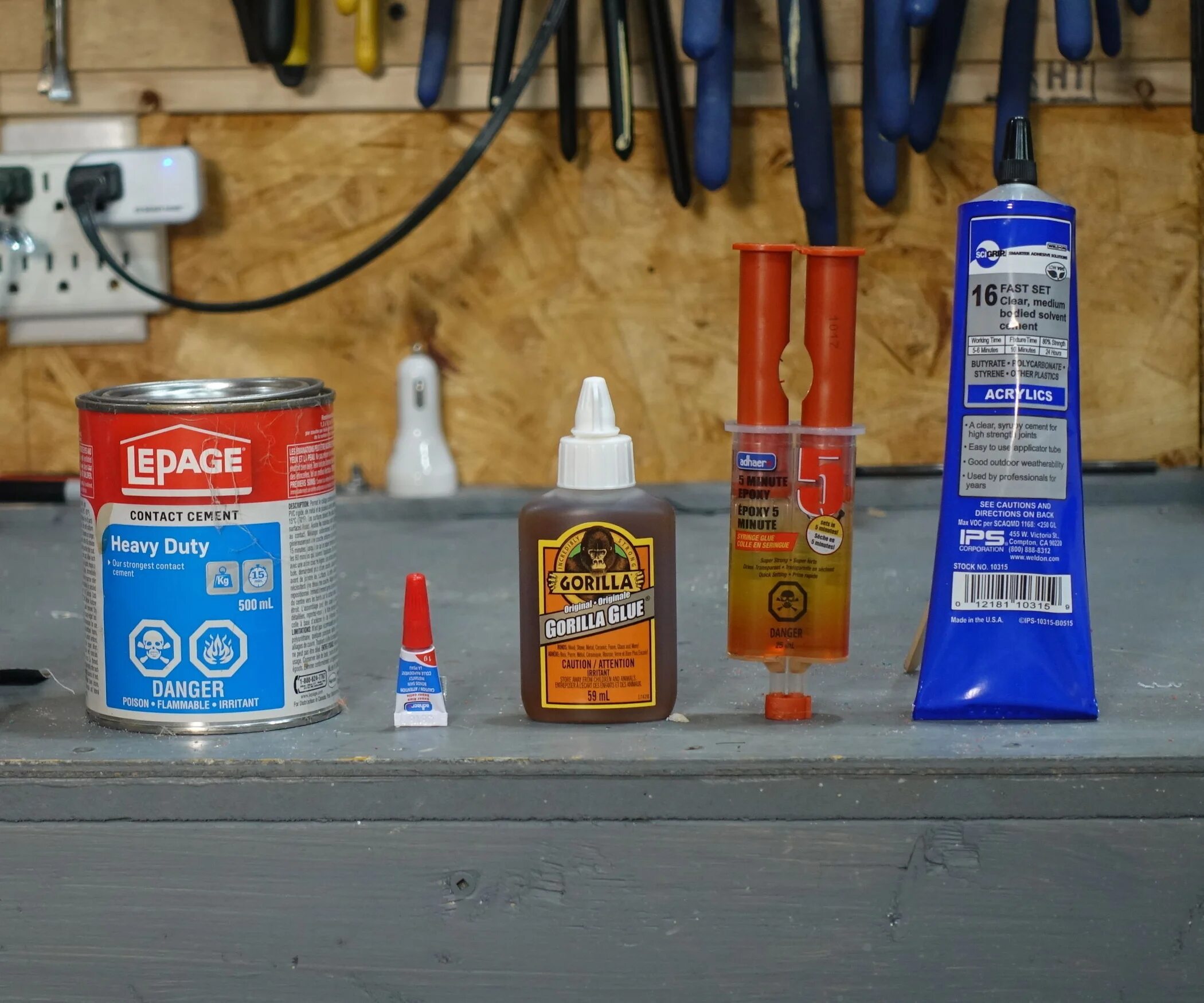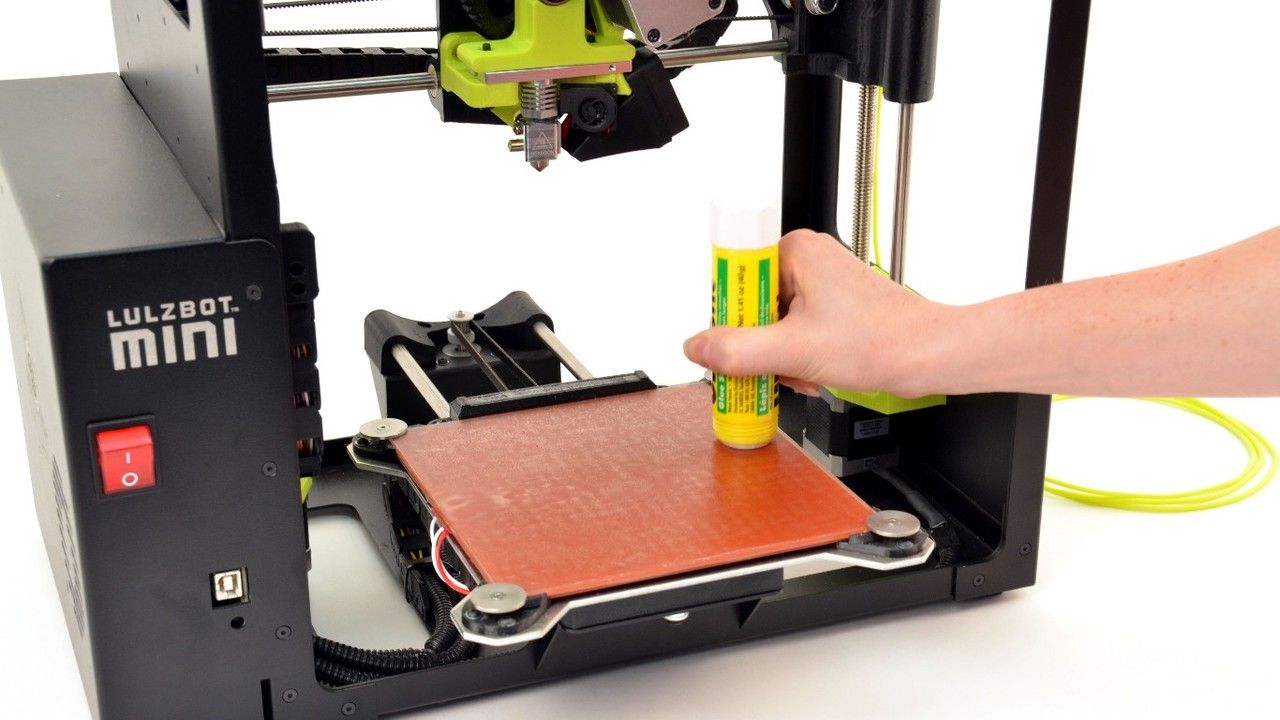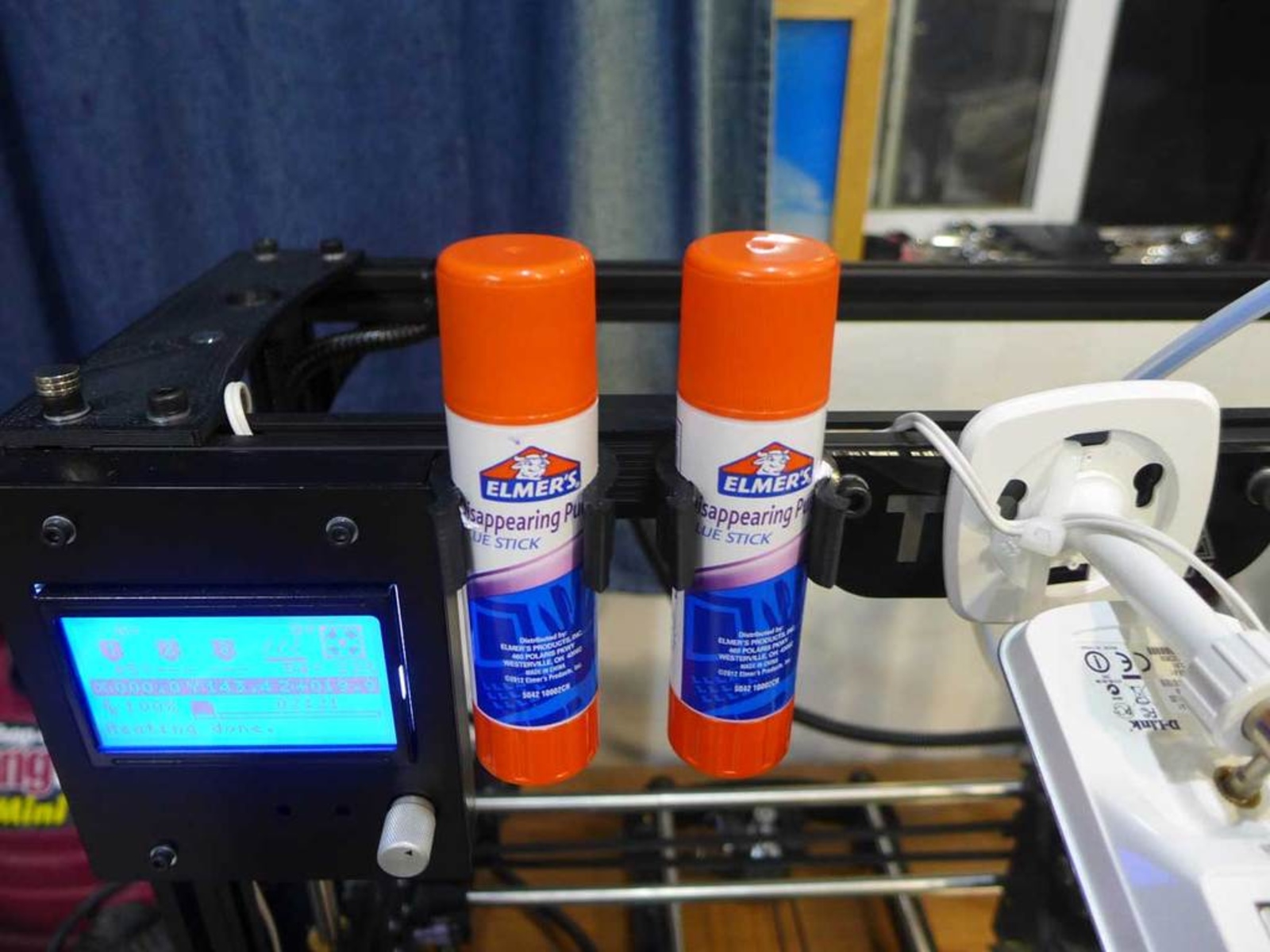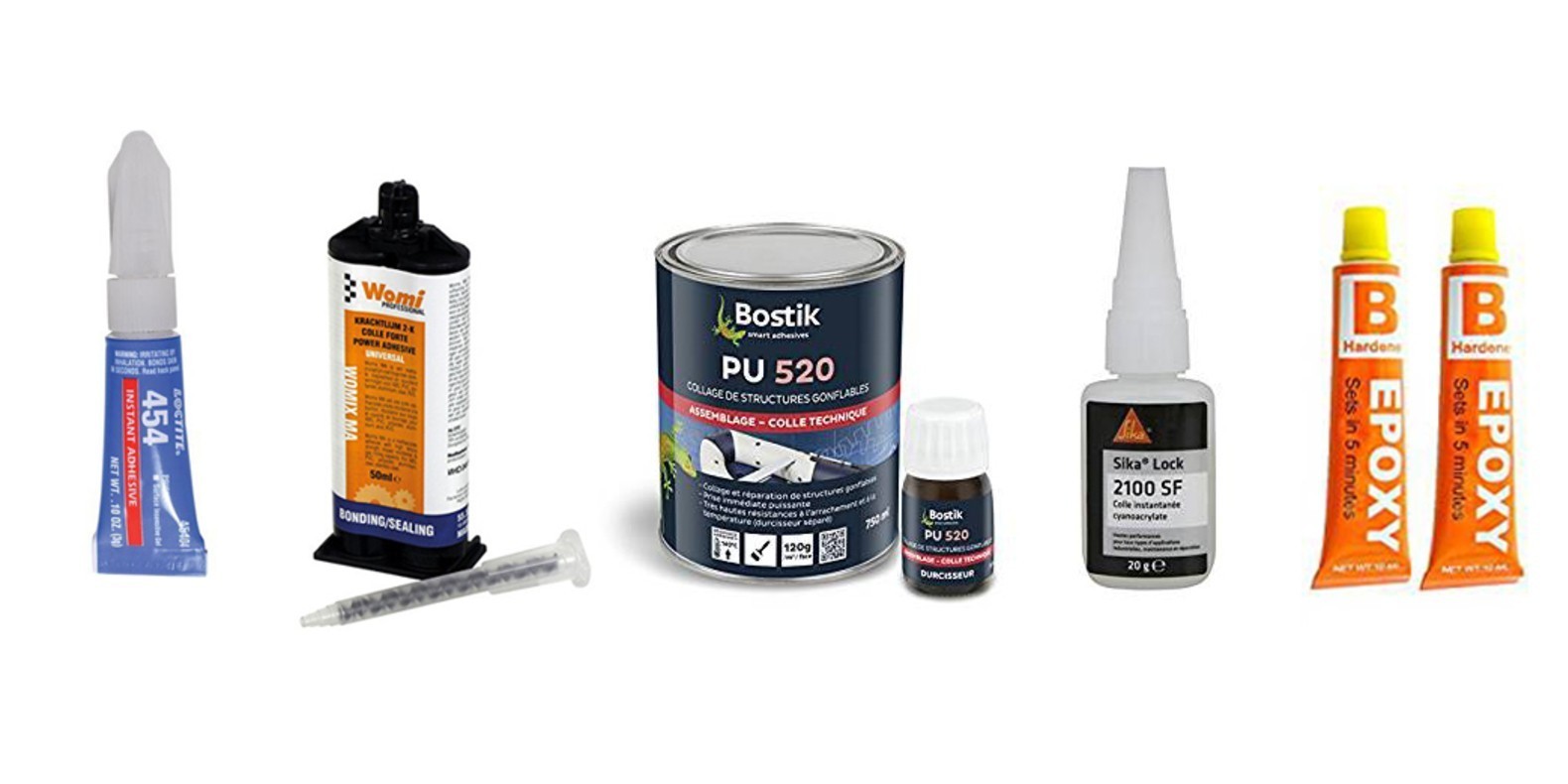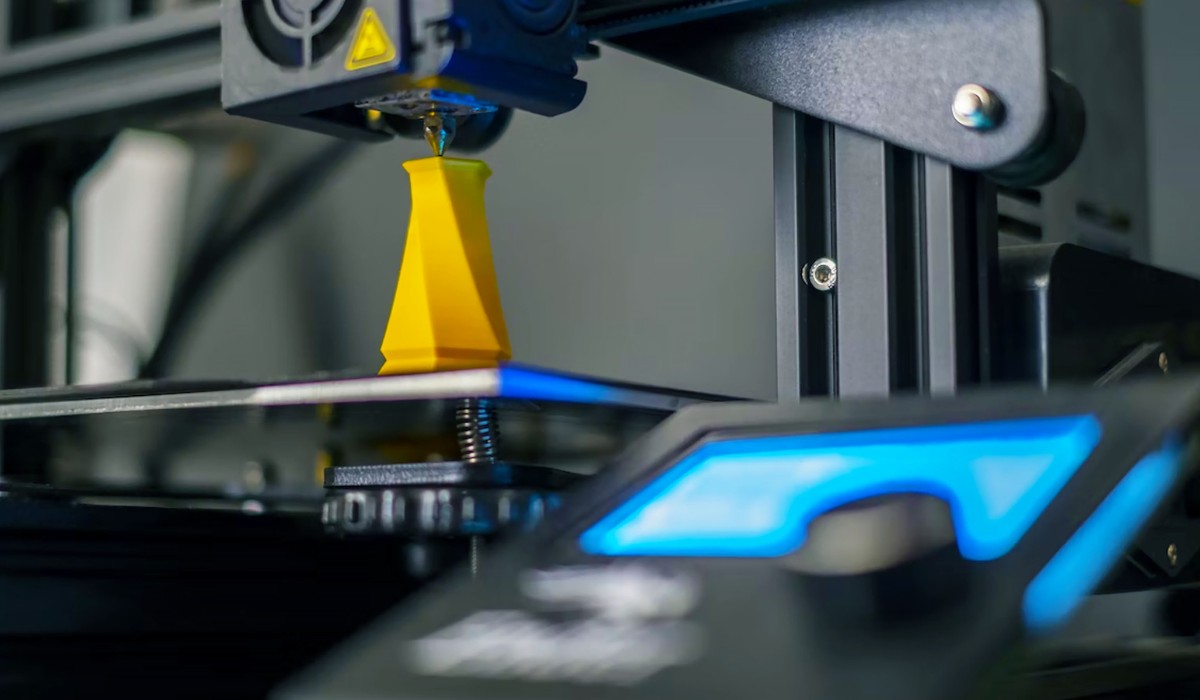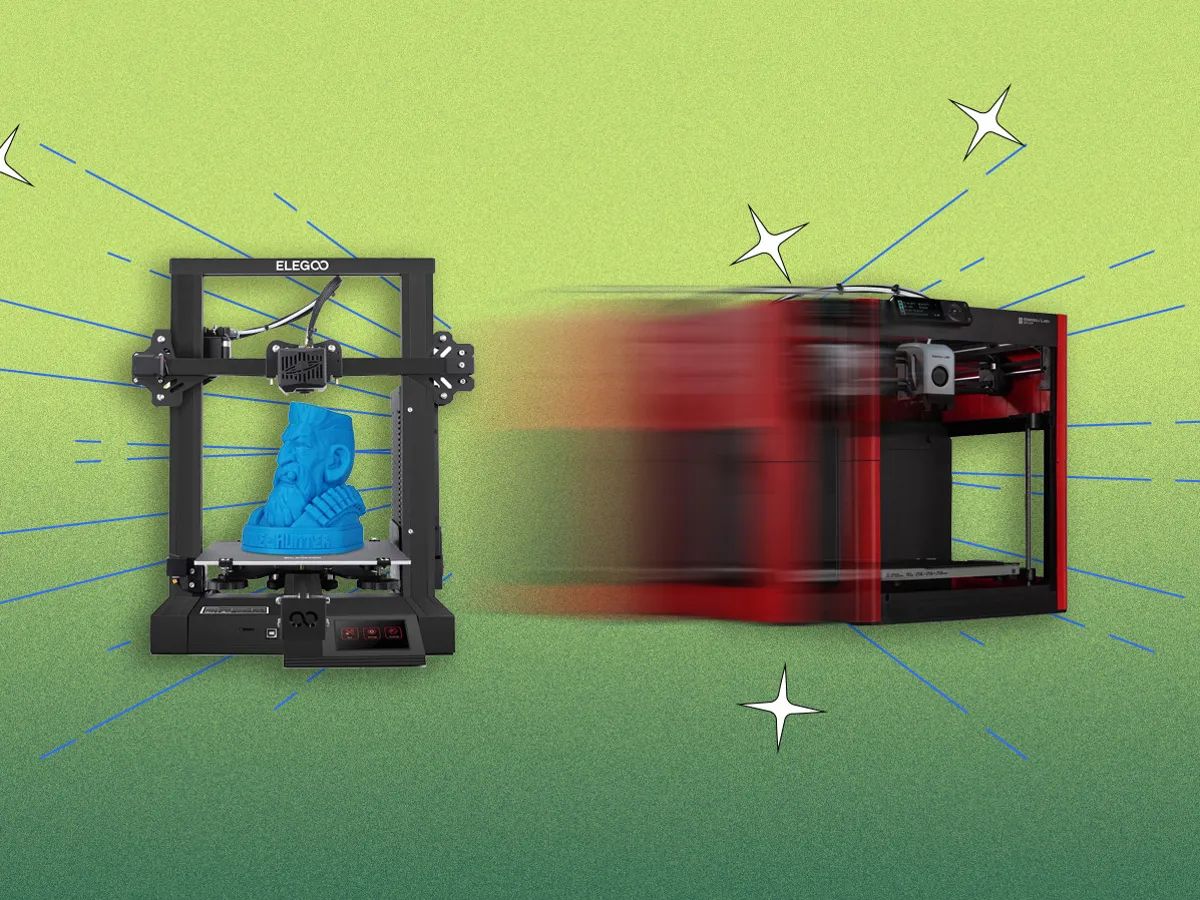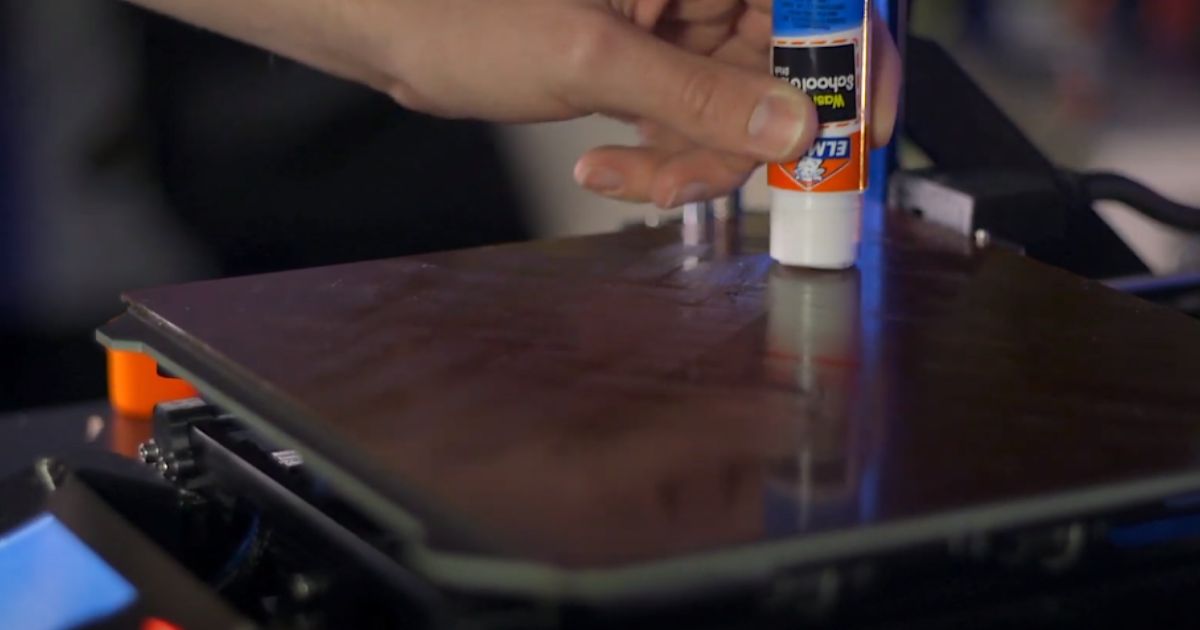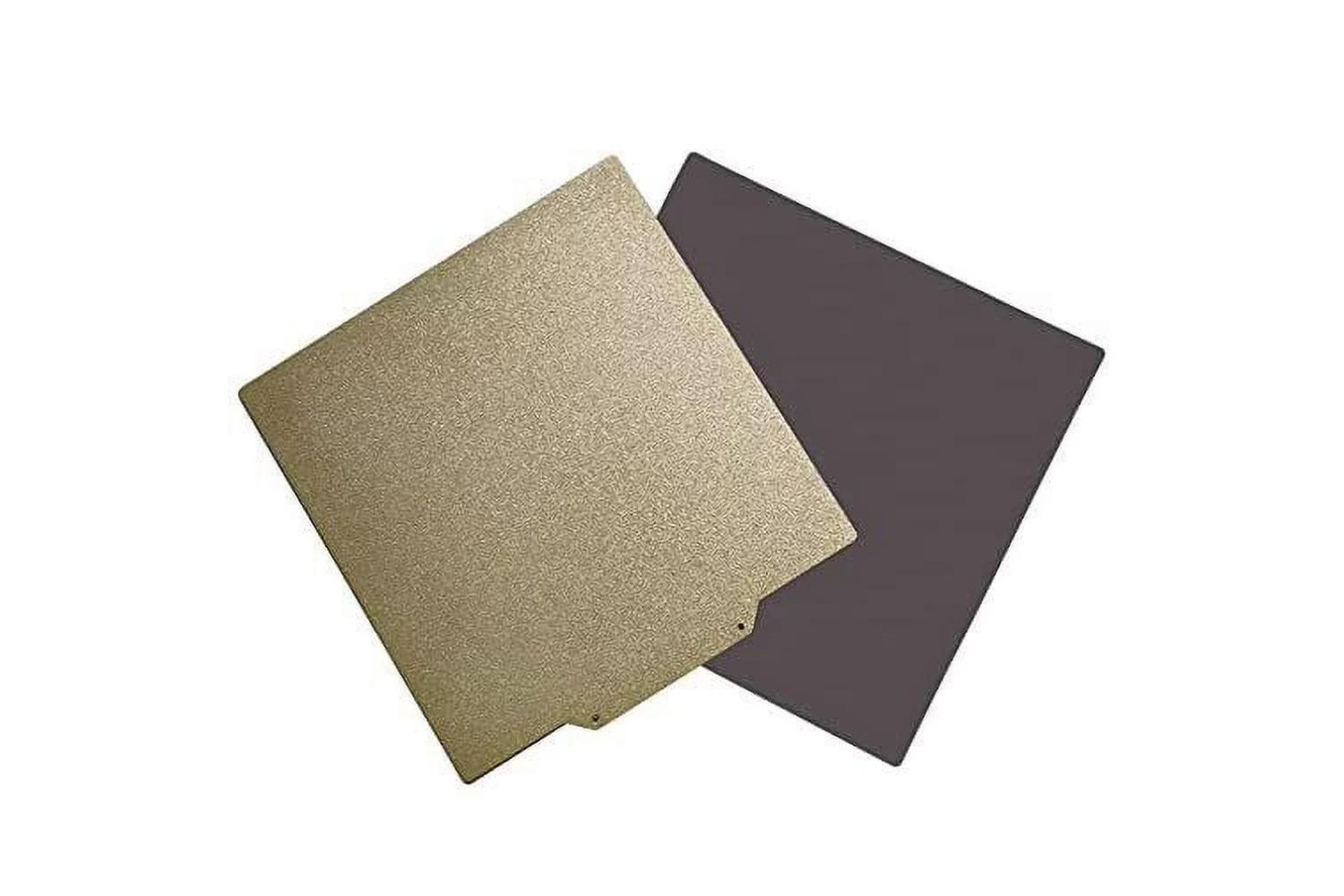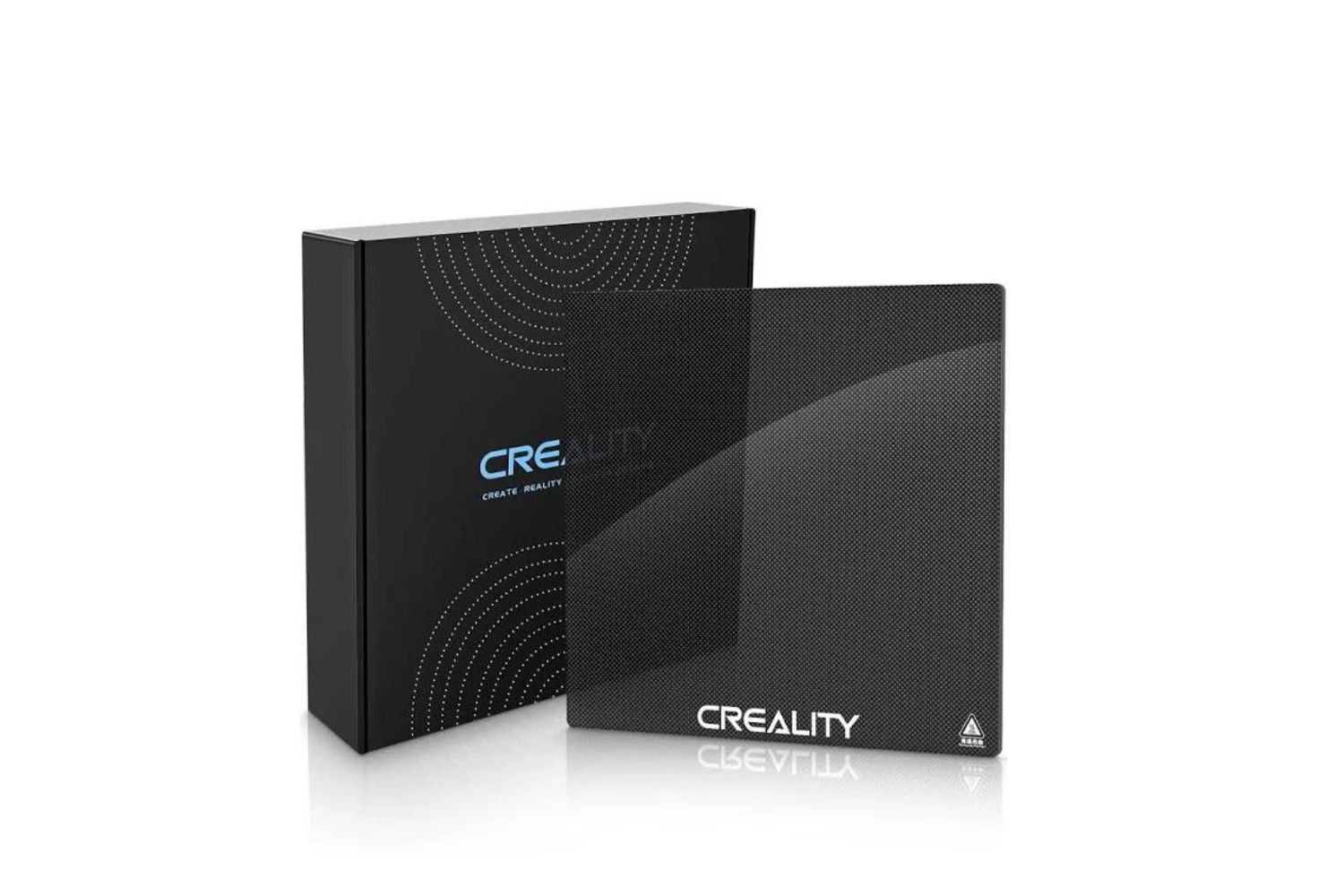What Glue for 3D Printing
When working with 3D printed parts, it’s common to encounter the need for glue to join or repair components. While 3D printing offers the advantage of creating complex and intricate designs, the layers of printed material can sometimes result in weak points or gaps between the layers. This is where choosing the right glue becomes crucial to ensure the durability and strength of your 3D prints.
There are several types of glue available for 3D printing, each with its own advantages and ideal use cases. Understanding these options can help you make an informed decision when it comes to selecting the right glue for your specific needs.
1. Super Glue (Cyanoacrylate)
Super glue, also known as cyanoacrylate adhesive, is a popular choice for bonding 3D printed parts. It forms a strong bond quickly and works well with various types of materials, including PLA and ABS. Super glue is often used for small-scale repairs or when joining non-load-bearing parts.
2. Epoxy Resin
Epoxy resin is a versatile adhesive that provides exceptional strength and durability. It consists of two components, a resin and a hardener, which need to be mixed together before application. Epoxy resin is ideal for bonding large or load-bearing 3D printed parts, as it creates a strong and permanent bond.
3. 3D Pen Filament
If you have a 3D printing pen, you can use the same filament material to create repairs or bonds between your 3D prints. Simply load the filament into the pen, heat it up, and apply it to the areas that need to be joined. This method ensures compatibility and seamless integration with your existing prints.
4. ABS Slurry
ABS slurry is a mixture of ABS filament and acetone, creating a thick paste-like substance. It is commonly used for bonding ABS prints together, as the acetone acts as a solvent, allowing the layers to fuse together. ABS slurry is particularly useful for repairing cracks or gaps in ABS prints.
5. Solvent-Based Glue
Solvent-based glues, such as PVC or CPVC cement, are another option for bonding 3D printed parts. These glues work by chemically melting the plastic surfaces, creating a strong bond when they solidify. Solvent-based glues are mainly used for joining PVC or CPVC prints, making them suitable for plumbing applications or structural connections.
When choosing the right glue for your 3D prints, consider the material of your printed parts, the size and load-bearing requirements, as well as the specific application. It’s important to test the adhesive on a small area or scrap print before applying it to your final project to ensure compatibility and suitability.
By selecting the appropriate glue for your 3D prints, you can enhance the strength and durability of your creations. Whether it’s repairing a broken part or joining components together, the right adhesive can make a significant difference in the overall quality and functionality of your 3D printed objects.
Introduction
3D printing has revolutionized the world of manufacturing, enabling the creation of intricate and customized objects with ease. Whether you’re a hobbyist, engineer, or designer, 3D printing provides endless possibilities for bringing your ideas to life. However, the process of 3D printing doesn’t stop at simply creating the object; sometimes, additional steps are needed to ensure the longevity and structural integrity of the printed parts.
One common challenge faced by 3D printing enthusiasts is the need for glue to join or repair 3D printed components. While the layers of printed material can result in strong and solid objects, there may be instances where gaps or weak points emerge due to the nature of additive manufacturing. When this happens, the appropriate glue becomes essential to create resilient and long-lasting prints.
Choosing the right glue for your 3D prints is crucial to ensure the strength and durability of the finished product. With various adhesive options available, it’s important to understand their characteristics and ideal applications. This knowledge will enable you to make informed decisions based on the specific requirements of your projects.
In this article, we will explore different types of glue commonly used in 3D printing, their advantages, and the scenarios in which they are most effective. By understanding the various options, you can select the glue that best suits your needs and achieves optimal bonding and repair results.
Whether you’re looking to join small parts, reinforce load-bearing structures, or repair cracks and gaps in your 3D prints, choosing the right glue will help you achieve stronger and more resilient objects. By incorporating the appropriate adhesive into your 3D printing workflow, you can confidently create functional and durable items that stand the test of time.
Why Glue is Needed for 3D Printed Parts
While 3D printing offers numerous advantages in terms of design freedom and customization, it is not uncommon for 3D printed parts to require additional bonding or repairs. There are several reasons why glue is needed for 3D printed parts, including:
- Strength and Durability: 3D printed parts are built layer by layer, and sometimes, weak points can form between these layers. By using glue, you can reinforce these areas and improve the overall strength and durability of the print. Glue helps to fill any gaps or spaces, creating a solid and cohesive structure.
- Joints and Connections: In some cases, your 3D print may consist of multiple parts that need to be joined together. Glue acts as a bonding agent, ensuring the parts stay securely connected. It allows you to create complex assemblies or larger structures by combining smaller printed components.
- Repairs and Modifications: 3D printed parts are not immune to damage or wear and tear. Glue can be used to repair cracks, gaps, or broken sections of a print. It provides an effective way to fix minor issues without the need for extensive re-printing.
- Enhanced Aesthetics: Glue can also help in achieving a more polished and refined look for your 3D prints. Using the right adhesive can create seamless joins between parts, making the print appear as a cohesive whole. This is particularly important for aesthetic applications where the appearance matters.
- Increased Functionality: Glue can enhance the functionality of 3D printed parts by providing additional reinforcement or creating new features. For example, you can use glue to attach magnets, hinges, or other elements that cannot be easily printed directly onto the object.
Overall, the need for glue in 3D printing arises from a desire to overcome the limitations and challenges posed by the additive manufacturing process. By using the appropriate adhesive, you can address these issues and achieve prints that are not only visually appealing but also strong, durable, and functional.
Types of Glue for 3D Printing
There are several types of glue available for 3D printing, each with its own unique characteristics and suitable applications. Understanding the different options can help you choose the right glue for your specific needs. Here are five common types of glue used in 3D printing:
1. Super Glue (Cyanoacrylate)
Super glue, also known as cyanoacrylate adhesive, is widely used in various applications, including 3D printing. It forms a strong bond quickly and works well with a range of materials, including PLA and ABS. Super glue is ideal for small-scale repairs or when joining non-load-bearing parts. Its fast-drying and high bond strength make it a popular choice for general-purpose use.
2. Epoxy Resin
Epoxy resin is a versatile adhesive that provides exceptional strength and durability. It consists of two components, a resin and a hardener, which need to be mixed before application. Epoxy resin is well-suited for bonding large or load-bearing 3D printed parts, as it creates a strong and permanent bond. Its ability to withstand high stress and extreme conditions makes it a reliable choice for industrial or functional prints.
3. 3D Pen Filament
If you have a 3D printing pen, you can use the same filament material to create repairs or bonds between your 3D prints. Simply load the filament into the pen, heat it up, and apply it to the areas that need to be joined. This method ensures compatibility and seamless integration with your existing prints, as you are using the same material that was used to create the original object.
4. ABS Slurry
ABS slurry is a mixture of ABS filament and acetone, creating a thick paste-like substance. It is commonly used for bonding ABS prints together. The acetone acts as a solvent, allowing the layers to fuse together, creating a strong and durable bond. ABS slurry is particularly useful for repairing cracks or gaps in ABS prints, as it provides a seamless finish and maintains the original ABS properties.
5. Solvent-Based Glue
Solvent-based glues, such as PVC or CPVC cement, are another option for bonding 3D printed parts. These glues work by chemically melting the plastic surfaces, creating a strong bond when they solidify. They are primarily used for joining PVC or CPVC prints, making them suitable for plumbing applications or structural connections. Solvent-based glues provide excellent bonding strength and chemical resistance, ensuring a reliable connection between the printed parts.
When selecting the right glue for your 3D prints, consider the material of the printed parts, the size and load-bearing requirements, and the specific application. It’s crucial to test the adhesive on a small area or scrap print before applying it to your final project to ensure compatibility and suitability. By choosing the appropriate glue, you can achieve strong and durable bonds, ensuring the longevity and functionality of your 3D printed objects.
Super Glue (Cyanoacrylate)
Super glue, commonly known as cyanoacrylate adhesive, is one of the most widely used glues in 3D printing. It is a versatile adhesive that can bond a variety of materials, including many commonly used 3D printing filaments like PLA and ABS.
One of the major advantages of super glue is its fast-drying nature. It forms a strong bond quickly, allowing you to complete your project without having to wait for an extended period of time. This is particularly useful for small-scale repairs or joining non-load-bearing 3D printed parts.
Not only does super glue provide a quick bond, but it also delivers a high level of bond strength. Once cured, the bond created by super glue is durable and resistant to impact, making it suitable for a wide range of applications. However, it’s important to note that the bond strength may vary depending on the specific materials being joined, so it’s always a good idea to test the adhesive on a small area before applying it to your final 3D printed object.
Another advantage of super glue is its versatility. It can be used with both rigid and flexible filaments, allowing you to bond different types of 3D printed parts together. However, it’s worth mentioning that super glue may not work as effectively on certain materials such as nylon or polypropylene, which might require specific adhesives tailored for those materials.
When using super glue with 3D printed parts, it is important to apply the adhesive sparingly. Excessive use of super glue can lead to unsightly excess glue residue or even damage the printed part. A small amount of super glue is often sufficient to create a strong bond, as it spreads easily and fills gaps between layers.
It’s worth mentioning that super glue has a relatively low tolerance to temperature and moisture. Extreme heat can weaken the bond, while humidity can slow down the curing process. Therefore, it is advisable to keep 3D printed objects bonded with super glue away from moisture and avoid exposing them to high temperatures.
In summary, super glue (cyanoacrylate adhesive) is a popular choice for bonding 3D printed parts due to its fast-drying time, high bond strength, and versatility. It is particularly useful for small-scale repairs or joining non-load-bearing components. However, it is important to consider the specific materials being used and to test the adhesive beforehand to ensure compatibility and achieve optimal bonding results.
Epoxy Resin
Epoxy resin is a versatile adhesive that is highly valued for its exceptional strength and durability. It consists of two components – a resin and a hardener – that need to be mixed together in precise proportions before application.
One of the key advantages of epoxy resin is its ability to create a strong and permanent bond between 3D printed parts. This makes it an ideal choice for bonding larger or load-bearing components, as it provides excellent structural integrity. The cured bond created by epoxy resin is resistant to impact and can withstand high levels of stress, ensuring the longevity and reliability of the 3D printed object.
Furthermore, epoxy resin offers a high degree of versatility in terms of material compatibility. It can bond various types of filaments used in 3D printing, including PLA, ABS, and even more advanced materials like nylon and carbon fiber-reinforced plastics. This makes epoxy resin an excellent choice for projects that involve multiple materials or complex assemblies.
Another advantage of epoxy resin is its ability to fill gaps and small imperfections in 3D printed parts. When applied, the resin can penetrate into the tiny crevices, creating a strong and seamless bond. This is particularly beneficial for repairing 3D printed objects with cracks, holes, or surface imperfections, as epoxy resin can effectively restore their structural integrity.
It’s important to note that epoxy resin requires proper mixing and careful application. Following the instructions provided by the manufacturer is crucial to achieve the desired results. A precise mixing ratio and thorough application ensure that the resin cures properly and maximizes its bonding strength.
However, it’s worth mentioning that epoxy resin has a longer curing time compared to other adhesives, typically ranging from a few hours to overnight. This extended curing time allows for adjustments and repositioning of the parts during the bonding process, but it also means that patience is required when working with epoxy resin in 3D printing projects.
Lastly, it is important to handle epoxy resin with caution and follow safety guidelines, as it can be toxic if ingested or come into contact with the skin. Proper ventilation and the use of personal protective equipment, such as gloves and goggles, are essential when working with epoxy resin.
In summary, epoxy resin is a versatile adhesive that offers exceptional strength and durability. It is particularly well-suited for bonding larger or load-bearing 3D printed parts and can work with a wide variety of filament materials. The ability to fill gaps and the seamless finish it provides makes epoxy resin an excellent choice for repairing and restoring the structural integrity of 3D printed objects.
3D Pen Filament
If you have a 3D printing pen, you can utilize the same filament material used for your 3D prints to create bonds and repairs. This method provides a seamless integration between the original print and the added elements, as you are essentially using the same material to join them.
Using a 3D pen filament for bonding offers several advantages. First and foremost, it ensures compatibility as you are using the exact same material that your 3D printed part is made of. This eliminates concerns about different materials not adhering well to each other or creating weak bonds.
The process of using a 3D pen filament for bonding is relatively straightforward. Load the filament into the pen, allow it to heat up, and then apply it directly to the areas that need to be joined. The melted filament acts as an adhesive, bonding the surfaces together as it cools and solidifies.
This method is particularly useful for adding extra reinforcement or making modifications to your 3D prints. For example, if you want to strengthen a specific section of your print, you can use the 3D pen filament to create additional layers or build up support structures.
One of the key benefits of using a 3D pen filament for bonding is the ability to achieve a seamless finish. Since the filament is made of the same material as the original print, it blends seamlessly with the existing layers, creating a cohesive and visually pleasing result. Additionally, you can easily match the color and appearance of the filament to ensure a uniform and aesthetically pleasing finish.
It’s important to note that using a 3D pen filament for bonding may not be suitable for load-bearing applications or situations where a high-strength bond is required. The bond strength may not be as strong as some other adhesive options, depending on the filament material and the application itself. However, for smaller repairs, attachments, or cosmetic enhancements, the 3D pen filament can be an effective and convenient solution.
Overall, using a 3D pen filament for bonding and repairs offers a compatible and seamless solution. It allows for easy integration with the original 3D print and provides an opportunity to reinforce or modify the object with the same material. While it may not be suitable for all applications, it can be a useful tool for smaller-scale repairs and enhancements in 3D printing projects.
ABS Slurry
ABS slurry is a mixture of ABS filament and acetone, creating a thick paste-like substance. It is commonly used for bonding ABS prints together and providing a seamless finish. ABS slurry utilizes the acetone as a solvent, allowing the layers of ABS to fuse together, creating a strong and durable bond.
One of the primary advantages of ABS slurry is its ability to fill gaps and create a smooth, uniform surface. When applied to a 3D printed ABS part, the slurry fills in any cracks, holes, or imperfections, resulting in a seamless finish. This is particularly useful for repairing ABS prints or joining multiple ABS components together to create larger structures.
The preparation of ABS slurry is relatively simple. Start by placing small ABS filament scraps or trimmings in a container and add a sufficient amount of acetone. Allow the ABS to dissolve in the acetone over time, periodically stirring the mixture until it forms a paste-like consistency. The slurry can be adjusted by adding more ABS or acetone as needed to achieve the desired consistency.
When applying ABS slurry, it is important to clean and roughen the surfaces that need to be joined. This allows for better adhesion and ensures a stronger bond. Apply the slurry to both surfaces and hold them together firmly until the acetone evaporates, creating a strong and durable bond between the ABS layers.
One of the drawbacks of ABS slurry is its strong odor, which is a result of the acetone used in the mixture. It is important to use ABS slurry in a well-ventilated area or with the appropriate respiratory protection to avoid inhaling the fumes. Additionally, acetone is a flammable substance, so it is essential to take proper precautions when working with ABS slurry.
ABS slurry is specifically designed for bonding ABS prints. It may not be as effective or suitable for other filaments or materials used in 3D printing. Each filament has its unique composition and characteristics, so it is important to select the appropriate adhesive for the specific material being used.
In summary, ABS slurry is a versatile and effective adhesive for bonding ABS prints in 3D printing. It provides a seamless finish, fills gaps, and creates a strong bond between layers. While it is important to consider the strong odor and flammability of the acetone used in the mixture, ABS slurry can be a valuable tool for repairing ABS prints or joining ABS components in 3D printing projects.
Solvent-Based Glue
Solvent-based glue, such as PVC or CPVC cement, is an effective option for bonding 3D printed parts made from PVC or CPVC materials. These glues work by chemically melting the plastic surfaces, creating a strong bond when they solidify.
One of the key advantages of solvent-based glue is its ability to create a reliable and permanent bond between PVC or CPVC prints. The chemical melting action of the glue softens the plastic surfaces, allowing them to blend and fuse together. As the solvent evaporates, the plastic solidifies, resulting in a strong and durable bond.
Solvent-based glues offer excellent bonding strength and chemical resistance, making them ideal for applications that require a high level of durability. They are commonly used in plumbing projects or structural connections where a secure and long-lasting bond is essential.
When using solvent-based glue, it is important to follow the manufacturer’s instructions carefully. The process usually involves applying a small amount of glue to the surfaces that need to be bonded, then quickly joining them together and holding them in place until the solvent evaporates and the bond forms. It is important to ensure proper ventilation when using solvent-based glues, as they can emit strong fumes.
It’s worth noting that solvent-based glue is specifically designed for bonding PVC or CPVC materials and may not be suitable for other 3D printing filaments. Each filament has its unique composition, and using the wrong adhesive can result in weak or ineffective bonds.
Additionally, solvent-based glues are not suitable for gap-filling applications. They rely on the close contact of the surfaces to create a bond, so it is important to ensure that the parts fit together snugly before applying the glue.
While solvent-based glue provides a strong and reliable bond, it is important to consider the safety precautions when working with these types of adhesives. Always use them in a well-ventilated area and wear appropriate personal protective equipment, such as gloves and goggles, to minimize contact with the glue.
In summary, solvent-based glue, such as PVC or CPVC cement, offers a chemical bonding solution for PVC or CPVC 3D printed parts. It creates a strong and durable bond, making it ideal for plumbing or structural applications. However, it is crucial to ensure the correct filament material and to follow safety guidelines when working with solvent-based glue to achieve optimal results.
How to Choose the Right Glue for Your 3D Prints
Choosing the right glue for your 3D prints is essential to ensure the strength, durability, and successful bonding of your printed parts. Here are some factors to consider when selecting the appropriate adhesive:
1. Material Compatibility:
Consider the material your 3D prints are made of. Different glues work better with specific materials. For example, super glue and epoxy resin are compatible with a wide range of filaments like PLA and ABS, while solvent-based glues are specifically designed for PVC or CPVC prints. Ensure that the adhesive you choose is compatible with the material you are working with.
2. Bond Strength:
Assess the strength requirements of your prints. If you need a high-strength bond for load-bearing applications or joining larger parts, epoxy resin or solvent-based glues may be suitable. For smaller repairs or non-load-bearing connections, super glue or 3D pen filament adhesives may be sufficient.
3. Application Type:
Consider the specific application in which you will be using the glue. Are you bonding small parts, repairing cracks, or assembling larger structures? Different glues have varying viscosities and application methods. For example, ABS slurry is effective for filling gaps, 3D pen filament is great for precise repairs, and epoxy resin is suitable for bonding larger parts or adding reinforcements.
4. Curing Time:
Take into account the time available for the glue to fully cure. Some adhesives, such as super glue, have fast curing times, while others, like epoxy resin, require longer curing periods. Ensure that the curing time aligns with your project’s timeline and the bonding requirements.
5. Safety Considerations:
Pay attention to any safety precautions associated with the chosen adhesive. Some glues may emit strong fumes and require proper ventilation or protective equipment. Always follow the manufacturer’s instructions and take necessary safety measures to protect yourself during the bonding process.
It is essential to test the adhesive on a small area or scrap print before applying it to your final project. This allows you to assess the compatibility, bond strength, and overall performance of the glue before committing to the full application.
By considering these factors and understanding the characteristics and limitations of different glues, you can choose the right adhesive for your 3D prints, ensuring strong bonds, durability, and successful project outcomes.
Conclusion
Choosing the right glue for your 3D prints is crucial to ensure the strength, durability, and successful bonding of your printed parts. By considering factors such as material compatibility, bond strength, application type, curing time, and safety considerations, you can make an informed decision when selecting the appropriate adhesive.
Super glue (cyanoacrylate adhesive) is a versatile option for small-scale repairs or joining non-load-bearing parts. It offers fast-drying time and high bond strength. Epoxy resin, on the other hand, is ideal for bonding larger or load-bearing components, providing exceptional strength and durability.
For those with a 3D printing pen, utilizing the same filament material for bonding creates a seamless integration with the original print. ABS slurry is effective for bonding ABS prints, filling gaps, and creating a smooth finish. Solvent-based glues, such as PVC or CPVC cement, are specifically designed for bonding PVC or CPVC prints, making them suitable for plumbing or structural connections.
When choosing the right glue, it’s important to consider the specific material, bond strength requirements, application type, curing time, and safety precautions. Properly test the adhesive on a small area or scrap print before applying it to your final project to ensure compatibility and suitability.
By selecting the appropriate glue for your 3D prints, you can enhance the strength, durability, and functionality of your creations. Whether you’re joining parts, repairing cracks, or adding reinforcements, the right adhesive ensures a reliable and long-lasting bond.
As you experiment with different glues and techniques, you will gain a better understanding of which adhesive works best for your specific projects. By taking the time to choose the right glue for your 3D prints, you can effectively solve bonding challenges and achieve exceptional results in your 3D printing endeavors.







